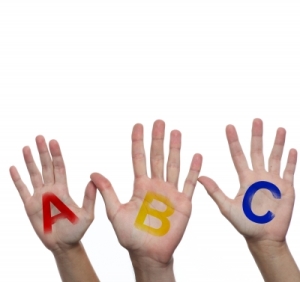To conclude my series on the interpreter’s language combination, I’ve decided to tackle the question that I find myself being asked more frequently than any other by student interpreters. I often find myself being approached in the corridor after class or cornered in the university canteen by students who want to know what language I think they should learn next. Incidentally, it seems to me that this is also the question raised most frequently by followers of Interpreting for Europe on Facebook. With so many people asking it, I’d say this question merits an answer.
 I’m sorry to say that the fairest, most honest answer to this question is no answer at all. It may not be the one that my students want to hear from me, but almost invariably, it is the one that they get.
I’m sorry to say that the fairest, most honest answer to this question is no answer at all. It may not be the one that my students want to hear from me, but almost invariably, it is the one that they get.
Budding interpreters want to know – quite rightly, I’d say – how they can expand their language combination in order to maximize their chances of professional success. After all, everyone is telling them that Spanish booth interpreters with passive English and Italian have no chance of finding work (just to give one example), and they want to know what they can do about it.
Why do I refuse to answer this very valid question? Because I think that the decision to learn a language is one of the most personal decisions a person can make, with wide-ranging ramifications, and it should not be influenced by helpful teachers, well-meaning colleagues, or anyone else, for that matter.
What would happen, for example, if I told a graduating student that Estonian was all the rage in Brussels, and he then went off to Estonia to learn it? In the best-case scenario, he might proceed not only to learn the language and get a job interpreting with it, but also fall in love with some Estonian girl, settle down, have kids, and the rest of it. Happy ending, right?
But what if this student had a rough time of it in Tallinn, never quite found his way in Estonian society, struggled with the language for years and then finally gave up, only to find out that his interpreting skills had gone rusty in the meantime and that he was no longer employable to anyone? Then he’d be likely to start cursing that well-meaning trainer who put him onto the idea of learning that stupid language in the first place (no offense intended to Estonian readers, obviously). And I don’t want to be that trainer.
You might think I’m overdoing it, but I’ll give you two stories from real life to illustrate that this sort of thing really does happen. In the first story, I’m the bad guy; in the other, I’m the (willing!) victim (author’s note: the colleagues in question gave me permission to publish these stories.)
The Big Chill
About two years ago, shortly after the start of the financial crisis, I was sharing a booth with a colleague I’ve known for years now. We were chatting about how Iceland had suddenly started warming to the idea of EU membership, after so many years of giving Brussels the cold shoulder (double pun intended). It then occurred to me that this colleague, having dabbled in Scandinavian languages some years previously, might take to Icelandic quite easily, and so I dropped the offhand comment that if he were to take up the Icelandic, he’d be sure to find himself in very high demand indeed when Iceland ultimately joined the EU, as it was sure to do quite soon.
Well, this guy liked the idea so much that by the end of the day, he had ordered two textbooks from Amazon and signed up to an online Icelandic course!
We all know what has happened in Iceland since (and I’m not referring to volcanoes). I still see this colleague regularly, and although initially it was fun to joke with him about the whole venture – asking how the lessons were going, how his last holiday to Reykjavik had been, and the like – lately I’ve been finding that I have hard time meeting his eye, because, contrary to everyone’s initial expectations, Iceland has now decidedly moved back away from EU membership. He insists he still enjoys his lessons – and indeed, has become quite advanced in his knowledge of Icelandic – but still, I’ve found myself apologising to him time and again for having put the idea in his head in the first place.
Be careful what you ask for …
The second story also starts with a benign chat, this time over a cup of coffee. An interpreter friend of mine, having just passed the exam to add German at the Parliament, said that she was looking for a new challenge (interpreters are like that!). She mentioned that a colleague of her husband’s had sent round an email with an offer of Portuguese lessons, and asked whether I would be interested in joining her in learning Portuguese.
It took my friend all of three seconds to twist my rubber arm – and the next thing I knew, I was sitting in a local language school being told why the accents aren’t put in the same place in Portuguese words, and trying to remember how I’d got there.
Initially, I thought I would just sit in on the lessons for fun, without taking the whole thing too seriously. But now, almost two years later, things have got very serious indeed: I recently found myself trying to plan a family holiday to Madeira so I could familiarise myself with the regional accent!
I should add that I am very thankful to my friend for having put the idea into my head, because I have since grown very fond of the Portuguese language and the people who speak it.
Oh, The Places You’ll Go
This brings me back to my initial point, i.e. that the decision to learn a language is an intensely personal one. To be able to interpret from a given language, you have to not only learn the language as it is taught in books, but get up close and personal with the culture and people that go with it as well (see Part II of this series for more information on passive language knowledge).
In order to do this, you will most likely end up spending considerable amounts of time in the country or countries where this language is spoken. You might find yourself, like me, arranging family holidays to these places (I can’t resist this tip: pick a country with a nice coastline!). You might end up seeking out job opportunities that take you in that direction. One way or another, you will end up going places where you can have first-hand contact with the language you are learning (author’s note: if you only click on one hyperlink today, make it that last one – or this one).
In order to be able to interpret well from a language, you will also have to get into the heads of its speakers. You will have to learn to curse with them at their politicians, follow their society scandals, watch their crummy sitcoms, laugh at their jokes, cry when their team loses the big game … okay, maybe not this last one, especially if they’re playing against your team in the final, but still, I think you get my point.
Most interpreters will say that all this is what makes up the joy of being an interpreter, and I would wholeheartedly agree. But who am I to tell students that they should be doing all this with Italian, or German, or Mandarin Chinese? They really have to decide this for themselves.
Of course, it is another thing altogether for an interpreting employer to inform future interpreters of the profile that they would find interesting in applicants. This is essentially what the EU’s interpreting service does through its Interpreting for Europe page on Facebook. They advise aspiring interpreters on language combinations and interpreting schools, and it is up to those receiving the information to decide what to do with it.
It should be said, of course, that learning Italian just because you have been told on Facebook that it is needed in Brussels is no guarantee that you will ever be called for “the test”, let alone end up working for the EU as an interpreter. But as I see it, Interpreting for Europe doesn’t make any promises it can’t keep, it simply informs interested parties of their current needs. Ultimately, the decisions – and the consequences thereof – lie squarely with the individuals taking them.
 Having just argued my case so convincingly against advising interpreting students on language combinations, I will now incriminate myself by admitting that I have been known in the past to say to students with neither French nor German in their combinations that they would be well-advised to learn one (or both) of these languages. It’s true, and it’s wrong of me. I find myself guilty as accused.
Having just argued my case so convincingly against advising interpreting students on language combinations, I will now incriminate myself by admitting that I have been known in the past to say to students with neither French nor German in their combinations that they would be well-advised to learn one (or both) of these languages. It’s true, and it’s wrong of me. I find myself guilty as accused.
Of course, I could say in my own defence that this view is less of a personal opinion than a God-given (or at least EU-given) truth. But that’s all anyone will ever get out of me. Except for the statement that Portuguese is great fun to learn, and that Icelandic, well …
Related Posts
Learning your ABCs – The Interpreter’s Language Combinations (Part I)
C is for … – The Interpreter’s Language Combinations (Part II)




